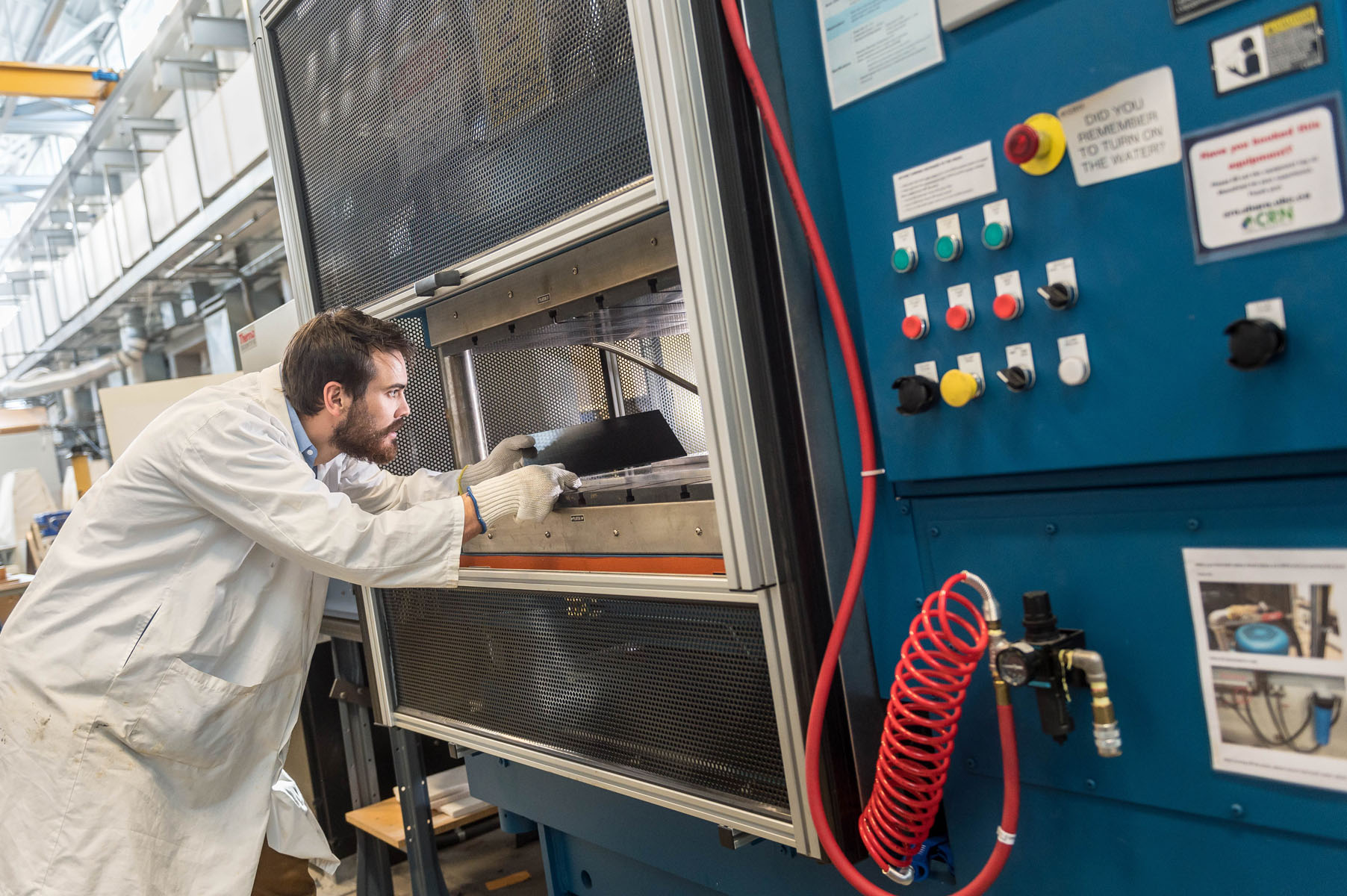The Composites Research Network works with small- and medium-sized companies (SMEs) to support the continued growth and maturation of composites manufacturing capacity. Short-term projects that address client business needs connect with the basic science that supports composites manufacturing.
SME Project Summaries
A Polymer Composite Rotor Shaft for Vertical Axis Hydrokinetic Turbines
Small-scale study for hydrokinetics firm for vertical axis hydrokinetic turbine manufacture shows feasibility of filament-wound design. Replacing stainless steel with fiber-reinforced polymer not only gives cost and weight benefits but also facilitates longer blades to increase power conversion.
Efficient Process Optimization for Carbon Fibre Epoxy Bike Components
Workflow analysis tools developed for the aerospace industry identify opportunities to optimise processing and reduce costs. Characterising cure cycle kinetics doubles production rates for manufacturing high-performance carbon composite cycling components with minimal investment and no performance penalty.
Delaminations in Waterjet Cut Fibreglass-Phenolic Composite Panels – Phase 1
Phase 1 initial review identifies processing solutions that avoid delamination during abrasive water jet cutting in manufacture of hard composite armour for personal protective equipment used to protect vehicle occupants from IEDs in combat zones. Optimising machining parameters for each laminate will reduce scrapped components and reduce costs.
De-moulding and Surface Quality
Tracking degradation over manufacturing cycles helps luxury boat manufacturer proactively manage mould maintenance for its open-mould glass fibre reinforced polymer (GFRP) workflow.
Design of a Stand-alone Weathering Station
A fully instrumented weathering station with advanced outdoor exposure rack system identifies ageing characteristics of polymer matrix composites. The data provide exposure and long-term performance/degradation data to optimise materials and processing for composite waterslide manufacture that prolongs lifespan and preserves both function and aesthetics.
Dimensional Control of Boat Decks
A laboratory-scale experimental approach helps analyse production practices and identifies laminate deformation risk factors during composite boat deck manufacture. Optimising cure and de-moulding processes significantly reduces buckling of demoulded parts during storage, which decreases expensive reworking prior to assembly.
Durability and Interfacial Quality of a Gelcoat and Concrete Mixed Coating of a UPE Sprayed-up Laminate – Phase 1
Establishing impact testing parameters helps direct experimental work required to explore candidate GFRP laminates as a suitable and effective replacement for concrete in outdoor aquatic play parks.
Effect of Manufacturing Workflow on the Moisture Resistance of Polyester and Vinyl-ester Based Composites – Phase 1
Purpose-built blister tank and methodology aids research into correlation between polyester laminates processing workflows and moisture resistance. Data gathered will aid development of new materials and optimise manufacturing workflows for improved performance and reduced degradation.
Outdoor Storage of Glass Fibre Reinforced Polymer (GFRP) Moulds
Determining degradation characteristics for outdoor mould storage helps develop better management programs to avoid costly maintenance. Effective protective coatings could reduce damage over time, maintain mould quality and increase lifespan.
Parallel Gelcoat Cracking in Boat Decks
X-ray micro CT analysis shows improper cure management of GFRP deck components causes gelcoat cracking and subsequent warranty claims. Better thermal management and cure, along with process modifications helped save time and costs.
Polyurethane to Polyurea Spray-Up Processing – Phase 1
Laboratory-scale analytical approach investigates suitability and performance of new composite replacements for industrial application.
Resin Degassing before VARTM Processing
Experimental approach identifies controlled resin degassing as solution to void formation in translucent architectural products. When scaled up to full industrial implementation rejection rates fell below five percent, production levels rose, and material wastage fell to less than ten percent.
Room Temperature Curing of Polyester and Vinyl-ester Based Composites
On-site analysis helps determine seasonal environmental issues that impact composites product quality. Characterizing the cure kinetics of a wide range of polyesters and vinyl-esters in conjunction with on-site non-destructive FTIR helps CRN industrial members optimise design and process parameters under ambient temperature fluctuations. Each has been able to improve product quality and production rates.
Thermal Contact Resistance and Process Modelling
Laboratory-scale approach shows that the interfacial thermal conductivity and coefficient of heat transfer between a simulated mould and composite material are dependent on processing parameters.



